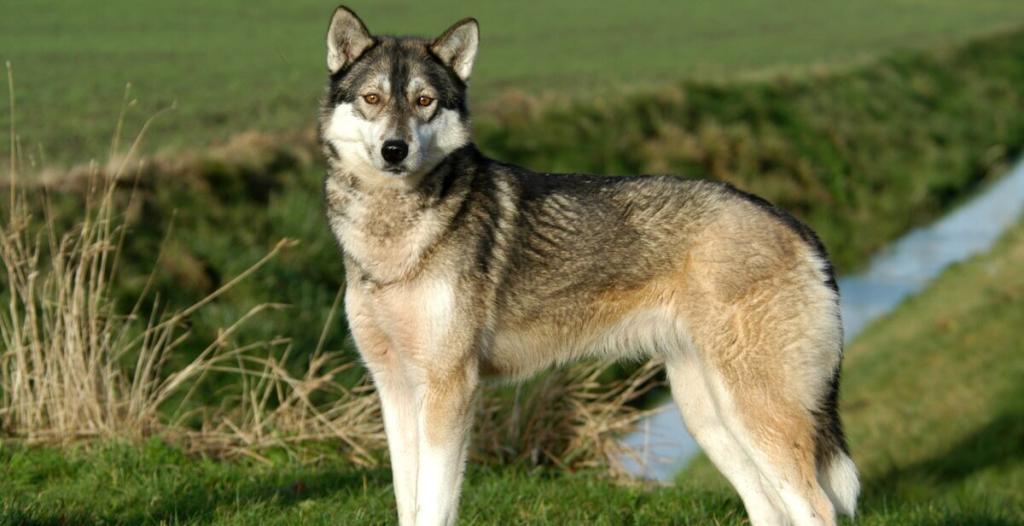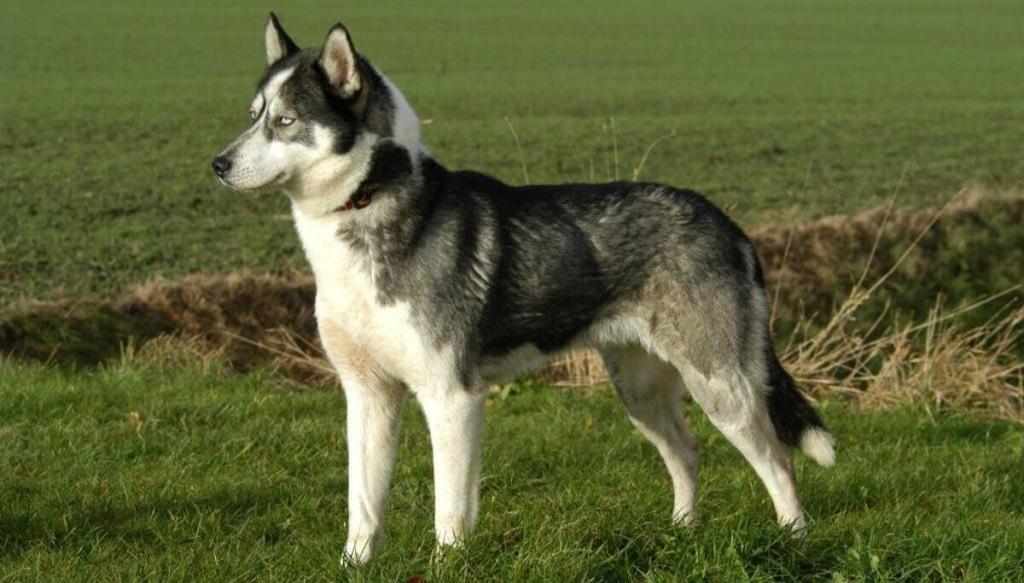While you may associate Siberian Huskies with their striking blue eyes and enviable stamina, you might not know their surprising vocal range and communicative ‘songs’ that set them apart from other breeds.
As a dog lover, you’re likely familiar with their thick fur and wolf-like appearance, but caring for a Husky goes beyond admiring their beauty; it’s a commitment that engages with their unique physical and emotional needs.
You’ll need to understand their grooming requirements, which are seasonal and ongoing due to their dense double coat. Their intelligence is matched by a strong-willed nature, demanding consistent training that balances discipline with positive reinforcement.
You’ll also be tapping into their storied history as sled dogs, which means accommodating their high energy levels with ample exercise. But before you picture yourself embarking on a wintry adventure with your new companion, consider the nuances of their temperament and the companionship they crave—factors that play a pivotal role in their well-being and your mutual happiness.
- Noise Level
- Energy
- Sociability
- Trainability
- Care
- Health
Overall
Summary
The Siberian Husky is known for its moderate noise level, high energy, sociable nature, moderate trainability, moderate care needs, and average health.
Siberian Husky: Traits, Temperament, and Care Guide
Embarking on the journey of understanding Siberian Huskies, you’ll discover that their distinctive traits and temperament make them both a challenging and rewarding breed to care for. Originating from the Chukchi tribe, these intelligent, independent sled dogs boast a friendly nature and thrive on firm, gentle training.
Their medium-sized stature, double coat, and high prey drive necessitate a comprehensive care guide. Their regular grooming and exercise need aligns with their playful, fun-loving disposition. Enjoying human company, Siberian Huskies are affectionate with children and compatible with other dogs. However, their activity level demands significant exercise to prevent boredom-induced behaviors.
Exploring the Characteristics of the Siberian Husky
Delving into the characteristics of the Siberian Husky, you’ll find a breed that combines a striking medium-length coat in a variety of colors with a robust and agile physique, essential for their historical role as sled dogs in harsh climates. Originating from the Chukchi people, Siberian Huskies were bred to pull sleds and compete in sled dog races. As medium-sized dogs, they are resilient to cold weather, paralleled by few other breeds.
| Trait | Detail | Importance |
|---|---|---|
| Size | 20-23.5 inches, 35-60 pounds | Ideal for working dog roles |
| Coat | Medium-length, variety of colors | Suitable for cold climates, shedding season |
| Exercise Requirements | At least 40 minutes per day | Prevents obesity, maintains agility |
| Social Characteristics | Friendly, good with children and dogs | Enhances family and pack integration |
They’re not just pets but part of a community, a shared legacy of the Chukchi culture, thriving on camaraderie with humans and fellow dogs.
Siberian Husky: A Comprehensive Profile and Guide
As you consider adding a Siberian Husky to your life, it’s essential to understand their specific needs and characteristics.
These dogs exhibit a robust build, with a well-defined muscular structure, suitable for their original sled-pulling tasks in harsh Siberian climates.
They possess a distinctive double coat that requires regular grooming to maintain health and manage seasonal shedding.
Everything You Need to Know
Understanding the Siberian Husky requires examining its unique characteristics, from its origins in the harsh climates of northeast Asia to its specific care needs as an active, working dog. Developed by the Chukchi people, these robust canines were bred to require less food while pulling sleds across vast, frozen landscapes. Its thick coat is an adaptation to subzero temperatures, necessitating regular grooming.
- Obedience Training: Essential for managing their independent streak.
- Health Issues: Look for genetic conditions common in the breed.
- Serum Run Legacy: Their historical endurance feat remains a testament to their tenacity.
As you consider bringing a Siberian husky into your life, remember these care tips and their need to be friendly with people, reflecting the deep sense of belonging they evoke.
Discovering the Temperament
When considering the temperament of Siberian Huskies, it’s essential to recognize that their intelligence is matched by an independent streak, making consistent, firm, and gentle training a necessity from their early puppy stages.
As members of the Siberian Husky Club will attest, these companion dogs bond deeply with their human counterparts, flourishing with plenty of time and interaction. Developed under harsh conditions, they love running, and nurturing this instinct is paramount for their well-being.
Although not easy dogs to train and less prone to watchdog tendencies, their nature is amiable, making them unsuitable as guard dogs. They’re outgoing and playful, requiring a secure environment to curtail their escape artist proclivities.
As a lead dog, a Husky’s temperament is complex, but with patience, they become cherished family members.

Siberian Husky: Is It a Good Fit for Families?
You might wonder if a Siberian Husky is a suitable addition to your family, especially considering their unique temperament and needs.
It’s vital to acknowledge that while they’re friendly and enjoy human companionship, they require consistent training and ample exercise to prevent behavioral issues.
Given their playful disposition yet independent nature, Huskies can integrate well with family life, but they also demand attention to their grooming and exercise regimen to maintain their well-being.
Assessing Siberian Husky’s Compatibility with Families and Kids
Siberian Huskies are known for their affectionate and friendly nature towards children, making them a potential match for family environments. However, assessing whether this dog breed aligns with your family’s lifestyle is crucial. Siberian Huskies embody a spirit of companionship and playfulness that bonds well with active family members, especially kids who enjoy interactive play.
Consider these traits to determine compatibility:
- Temperament: They’re sociable and generally pet-friendly, thriving in environments where socialization is encouraged.
- Activity Level: Their vigor demands regular exercise, fitting for families with an active lifestyle.
- Trainability: While intelligent, Huskies can be independent, requiring patience and consistency in training to nurture a well-behaved family pet.
Husky Climate Versatility
Although Huskies originate from cold climates, they possess a surprising adaptability to moderate heat. They must engage in indoor activities during hotter periods to prevent overheating.
Your Siberian husky, bred to race through blizzards to deliver serum, has dense coats that withstand brutal winter temperatures. However, these same coats require you to monitor them closely in warmer weather.
When planning outdoor adventures, consider conditions to be aware of—like the sweltering summer heat of Central Park. Huskies’ exercise shouldn’t be neglected, but you must adapt activities to ensure their safety and comfort.

Husky Obedience Techniques
If you turn your attention to Husky obedience techniques, you’ll find that establishing a regime of consistent, firm, yet gentle training from puppyhood is essential.
It would be best to employ positive reinforcement tactics, rewarding your Husky with treats, praise, or play to fortify good behavior.
Effective Training Strategies
To effectively train your Husky, it’s crucial to establish yourself as the pack leader, ensuring consistency in your approach to address the breed’s independent streak. Siberian huskies, originally dogs bred for hauling sleds, possess a distinct behavior that calls for unique training strategies. Begin training your dog from a young age to promote proper socialization and instill desirable habits early on.
| Strategy | Description | Benefit |
|---|---|---|
| Positive Reinforcement | Use treats and praise to encourage good behavior. | Strengthens dog-owner bond. |
| Mental Stimulation | Interactive games to prevent boredom. | Keeps the dog engaged and happy. |
| Regular Exercise | Channel their energy and athleticism with activities. | Promotes physical health and responsiveness. |
Exercise and Grooming Needs
Regularly engaging your Siberian Husky in at least 1-2 hours of exercise daily is crucial for their physical and mental well-being. Consistent grooming practices are also essential to manage their thick, double-layered coat.
Your Siberian Husky’s exercise and grooming needs are significant for a medium-sized dog bred to run. Huskies were bred for endurance, and a good run a couple of times a week will help prevent obesity and maintain fitness.
Their dense coat, which comes in various colors, requires brushing a few times a week, especially during shedding seasons. You’ll also need to trim their nails regularly to avoid discomfort.
Siberian Huskys are social animals but tend to bark less. Instead, they communicate through howling and require companionship to thrive.
Health Considerations
When considering a Siberian Husky’s well-being, it’s crucial to know their predisposition to certain genetic conditions. Regular health assessments can detect issues such as hip dysplasia, which affects joint formation, hypothyroidism, which can disrupt metabolism, and progressive retinal atrophy, which leads to vision loss.
Common Health Issues and Lifespan
Understanding a Siberian Husky’s common health issues and lifespan is crucial for any potential owner, as these dogs typically live between 13 and 15 years and may face specific health challenges.
Hereditary health conditions can be a concern; your Siberian Husky might be predisposed to hip dysplasia, eye issues such as cataracts and progressive Retinal Atrophy, hypothyroidism, and Von Willebrand’s Disease.
A nutritious diet and appropriate exercise can mitigate many potential ailments. Considering the breed’s storied past as a Trail Sled Dog—famously delivering life-saving serum during the diphtheria epidemic—the robustness with which the breed was developed still requires vigilant pet health management.
To safeguard against unforeseen illnesses or injuries, investing in pet health insurance and thoroughly comparing plans to find the best coverage is wise.
Is Siberian Husky the Right Dog for You?
Deciding whether a Siberian Husky suits your lifestyle requires considering their need for extensive daily exercise and consistent, firm training. As a working group member, this dog breed thrives on vigorous activities like running and skijoring. If you’re active and can commit to 1-2 hours of exercise daily, a Siberian Husky could be a fitting companion dog.
These independent and strong-willed dogs aren’t the best match for first-time owners. They need a secure yard to prevent escapes and regular grooming, which demands time and effort. Although they generally get along with other dogs, they may chase cats and shouldn’t be left alone too much.
If you’re looking to adopt or buy, ensure you’re ready to join the unique community of Spruce Pets, which is dedicated to Siberian Huskies.
Alternatives for Siberian Husky: Energetic and Friendly Cold-Weather Breeds
Explore these breeds if you’re drawn to the Siberian Husky’s energy and friendliness, ideal for those who value spirited and amiable cold-weather dogs.
| Similar Dogs | Short Description |
|---|---|
| Alaskan Malamute | Known for its strength, endurance, and friendly nature, perfect for cold climates. |
| Samoyed | Recognized for its fluffy white coat and smiling expression, friendly and gentle. |
| Akita | A larger breed renowned for its dignity, courage, and loyalty. |
| Alaskan Klee Kai | A smaller version of the Husky, known for its intelligence and loyalty. |
Conclusion
So, you think you’re ready for a Siberian Husky? Brace yourself for a whirlwind of fur, boundless energy, and the occasional ‘Husky Houdini’ escape act.
These puppies aren’t just adorable fluffballs; they’re workout buddies that never heard of a rest day. Remember, if you can’t handle a bit of dog hair in your morning coffee, maybe stick to a goldfish.
Choose a Husky, and you’re signing up for a fun and fur-ever grooming marathon.
